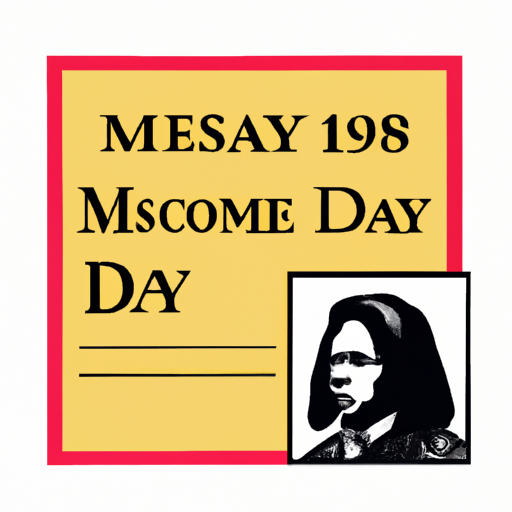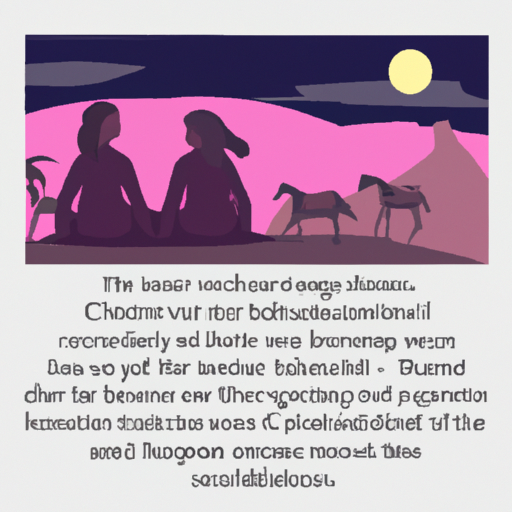A History of the Fallen Woman in Victorian Society
Unearth the backstory of a female who succumbed to the rigors of Victorian culture and ponder the impacts of her destiny. Delve into an era of stringent standards and trace the history of a delicate soul, whose story has been left untold until now. Uncover a tale that has been hidden away in time, and explore what became of this woman’s life.

Time has a way of rendering forgotten those who have come before, and this is especially true for a certain female from the Victorian era. Despite her life being cloaked in mystery, it is possible to gain insight into how she was affected by the stringent regulations of her culture.
During this period, women were expected to remain within their designated roles and had few chances for self-expression or independence. This woman likely encountered many obstacles as she tried to discover her place in such a rigid society. The consequences of these conventions on her life are uncertain, but we can speculate that she may have experienced feelings of loneliness or even despair due to not being able to freely express herself or pursue any form of meaningful work. The lack of control over her own destiny may have eventually caused her to succumb to the rigors of Victorian culture, resulting in an untimely end.
By studying history, we can begin to uncover this woman’s story and gain a greater understanding of what became of her life. We may never know precisely what happened during her lifetime, yet we can still pay tribute to her memory and think about how much our world has changed since then.
.
Introduction

Amidst the Victorian period, a woman who had strayed from the accepted standards of propriety or morality was labeled as a “fallen woman”. Such women were usually scorned by their families and society, and often encountered difficulty in finding employment or a suitable spouse. This phenomenon is closely related to the social norms of that era, wherein strict adherence to certain codes of conduct was highly valued.
– History of Fallen Women in Victorian Society
In 19th century England, the moral codes of the time were a force to be reckoned with. Women were expected to uphold an image of purity and chastity, and any deviation from this was seen as a sin. Those who failed to adhere to these expectations were branded “fallen” or “immoral,” and subjected to severe repercussions such as public humiliation, incarceration in workhouses, or exile in reformatories. This stigma followed them wherever they went, leaving many with no other choice but to turn to prostitution for survival.
Attempts were made by religious organizations like the Salvation Army and Magdalene Asylums to aid these women in their journey back into society, offering shelter and vocational training in an effort to make them more self-sufficient. Unfortunately, these efforts did little to improve their standing in the eyes of respectable society due to the deep-seated prejudice against them.
The story of fallen women in Victorian England is one that speaks volumes about the restrictions placed on women during this period and the lack of support available for those who strayed from them. Although strides have been made since then towards providing greater opportunities for those facing marginalization, there is still much work left to be done when it comes to those deemed “fallen” by society.
– Social Stigma of Fallen Women in Victorian England
Amidst a period of great social and cultural transformation, the Victorian era in England was distinguished by stringent moral codes. Women who engaged in sexual activity outside marriage were subject to severe consequences, ranging from public humiliation to imprisonment and even death. This article will explore the history of this social stigma and its effects on female lives during the Victorian era.
At that time, female sexuality was heavily regulated by society. Any deviation from the expected chastity until marriage could result in ostracism or harsher punishments. Fallen women were viewed as immoral and sinful, and they were often denied basic rights such as housing or employment. Harsh measures like public shaming or whipping were employed in an effort to deter further sexual activities outside marriage.
The most extreme form of punishment for fallen women during the Victorian era was transportation to Australia; this policy lasted from 1718 until 1868, with thousands of convicted felons being sent away as a consequence for their crimes – including many fallen women sentenced for prostitution or other sexual activities deemed unacceptable by society then.
Though attitudes towards fallen women have changed drastically since then, its legacy still lingers today. Even now, there is still a powerful stigma against unmarried mothers and those engaging in premarital sex; some are even hesitant to admit their own experiences due to fear of judgment from others. It is essential to remember that this history has shaped our modern views on sexuality and gender roles, and should not be forgotten or disregarded.
– Causes of Becoming a Fallen Woman in the Victorian Era
Amidst the Victorian Era, a period of tremendous transformation and moral reform in England, industrialization and urbanization were on the rise, while class divisions were diminishing. Women were expected to adhere to a code of conduct that included chastity and submission; however, there were many explanations for why a female could become a “fallen woman,” or one who has gone astray from the accepted conventions of society.
One cause was poverty. Many women during this time endured extreme destitution due to lack of job opportunities, inadequate pay, and limited access to education. This absence of resources caused some ladies to turn to prostitution as an approach to make ends meet or support their families.
Another explanation was abuse. Females who experienced physical or sexual mistreatment often felt they had no selection but to resort to prostitution as an approach for survival. Additionally, those who had been deserted by their fathers or husbands generally confronted impoverishment and desperation that drove them into prostitution too.
A third cause was societal pressure and expectations placed on females during the Victorian Era. Women were anticipated to stay chaste until marriage, leaving unmarried women with few options regarding their sexual activity. Those who chose not to abide by these rules encountered social disgrace and exclusion from their communities, leading some into prostitution as an act of defiance against societal standards.
Finally, some women resorted to prostitution out of curiosity or a craving for autonomy beyond the strict limits set by society at large.
To sum up, poverty, abuse, societal demands and expectations, as well as individual inquisitiveness all contributed significantly to the prevalence of fallen women during the Victorian Era.
– Impact of the Fall of Women on Victorian Society
The Victorian era saw a dramatic decline in the status of women, with many denied basic rights and relegated to the domestic sphere. This was a period of immense powerlessness for females, with poverty levels in female-headed households rising due to lack of education and employment opportunities. Moreover, legal protections were largely absent, leaving women vulnerable to abuse and discrimination. Public services such as healthcare and education were also neglected, further exacerbating the situation.
Culturally, gender roles became increasingly entrenched within society, with traditional stereotypes being reinforced by the idea that men were superior to women. This created an environment where sexism was commonplace and any attempt at female advancement was met with hostility. The ramifications of this period can still be felt today, making it all the more important that we recognize its history and strive for greater gender equality in our current world.
– Historical Representations of Fallen Women in Victorian Literature
For centuries, readers have been captivated by the tales of Victoriana – and the depiction of ‘fallen women’ has been no exception. These characters, who had broken society’s moral code, were oft utilized to delve into topics such as gender roles, morality, and class.
The most renowned example of this type of character can be found in Thomas Hardy’s Tess of the d’Urbervilles (1891). It tells the story of Tess, a young woman from an impoverished family who is seduced by her employer’s son, Alec d’Urberville. Upon learning she is pregnant with his child, Tess is cast out and left to her own devices in a cold world. Ultimately, she is put to death for killing Alec after he tries to rape her again.
Tess’s narrative serves as a commentary on the double standards that women faced during this time – while men could pursue their desires without consequence, females were expected to remain pure or suffer severe repercussions. This subject was also explored in other works such as Charlotte Bronte’s Jane Eyre (1847) and George Eliot’s Adam Bede (1859). In both these books, fallen women are portrayed compassionately; their errors are not seen as evidence of moral failing but rather as a result of external social factors beyond their control.
The representation of fallen women in Victorian literature reflects both its era and our own: it can be viewed as both a criticism of previous attitudes towards female sexuality and an exploration into how we perceive those same issues today. By studying these historical portrayals we can gain understanding into our own cultural beliefs and values regarding gender roles.
conclusion

In the Victorian era, a woman whose behavior had deviated from the accepted societal norms of the time was considered to have ‘fallen’. Such transgressions could include having an extra-marital affair or partaking in prostitution. This type of social ostracism was a direct result of the stringent class structure and gender roles that were commonplace during this period. The phrase ‘fallen woman’ has since become an integral part of British history, symbolizing the difficulties experienced by females in those days.
.
Some questions with answers
Q1. What is a fallen woman in Victorian society?
A1. A fallen woman was a term used to describe a woman who was seen as having lost her moral integrity and purity due to engaging in premarital sex, prostitution or other immoral behavior.
Q2. How did Victorian society view fallen women?
A2. Fallen women were typically viewed with disdain and judgement by the majority of Victorian society. They were often labeled as “immoral” and “sinful.”
Q3. What kind of consequences did fallen women face in Victorian society?
A3. Fallen women were often ostracized from their communities, denied employment opportunities, and subjected to public humiliation and ridicule.
Q4. Did any organizations exist to help fallen women in Victorian society?
A4. Yes, some charitable organizations existed to provide aid to fallen women in need, such as the Magdalene Asylums and the Rescue Societies of London.
Q5. How have attitudes towards fallen women changed over time?
A5. Attitudes towards fallen women have shifted significantly over time; today, there is more understanding and compassion for those who have been judged for their past mistakes or circumstances beyond their control.



